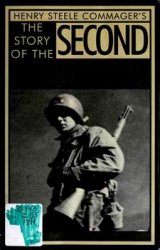At 14.00 hours on Saturday 6 October, the Syrian attack opened with a massive artillery and air attack lasting approximately 50 minutes. Under cover of this attack, the massed Syrian armoured forces moved forward, while an independent move was made against the Israeli position on Mount Hermon by helicopter-borne Syrian troops. This position was of vital importance to the Israelis, providing as it did a perfect observation post covering the whole field of battle and the approaches to Damascus. In addition, it was an ideal radar outpost and a site for sensitive electronic equipment. The fortification on the mountain top was well built, but the upper system of fortifications had not yet been completed. There were many signs of negligence in the position: the main gate had been damaged and swung open on its hinges unrepaired; no communication trenches had been dug outside the main fortification; and the total force allotted to defend this very sensitive position was one officer and thirteen men. The fortifications were built to withstand artillery fire and aerial bombing, but the trench system which would enable the infantry to defend the locality effectively had not yet been completed. Four Syrian helicopters loaded with troops of a commando battalion approached the peak of the mountain approximately a mile from the position. One helicopter exploded. The three others landed and discharged their troops. Advancing in two columns, the Syrians broke into the Israeli position, which, because of negligence, was not properly organized for defence. That afternoon the position fell to the Syrians. For the Soviet advisers of the Syrians, who arrived shortly after the fall of the position, the electronic equipment captured there was of singular value.
In the norrtiern sector, the Israeli 7th Armoured Brigade was attacked by the Syrian 7th Infantry Division supported by elements of the 3rd Armoured Division and a Moroccan brigade. Simultaneously, the main effort of the Syrians was developed at the Rafid Opening, through which they developed a major thrust along the Tapline Road. 188 Brigade, with 57 tanks, was facing the main effort developed by the Syrians with approximately 600 tanks participating in the attack. The Syrian 5th and 9th Infantry Divisions were supported in this attack by elements of the 1st Armoured Division. The Israeli forces, outnumbered and outgunned, fought desperately for every inch of territory.
188 Brigade clung on to its position with grim determination: the Syrian Armoured Brigade advancing along Tapline Road was held up for some twenty hours by a handful of tanks commanded by a young Israeli lieutenant, Zwicka Gringold, who rushed back to the battlefield from leave, removed the bodies of those who had been killed from a number of tanks, and created a hastily improvised force known as ‘Force Zwicka’, which rushed into battle with four tanks along Tapline Road to meet the oncoming onslaught led by the Syrian 90th Armoured Brigade. Utilizing his small force with flexibility, darting in and out of the Syrian columns at night, destroying enemy tanks wherever he could, and creating an impression of a much larger force, Zwicka succeeded in holding up the Syrian advance along the Tapline Road. Engaging the Syrians constantly, changing tanks as they were damaged, and continuing doggedly to harass the Syrians, Zwicka’s final effort was to appear in the last surviving tank of his ‘force’ out of the rolling terrain of the Golan Heights as the first Syrian tank broke through the defences of the Divisional Headquarters at Nafekh on 7 October, and to destroy that tank. He was later to be awarded the Order of Courage, Israel’s highest decoration for bravery.
By Sunday morning, 188 Brigade had been almost completely destroyed. When the brigade commander. Colonel Ben-Shoham, with his deputy and operations officer, manning a few remaining tanks, moved from Nafekh along the Tapline Road to meet the Syrian attack in a desperate last move, the entire group was wiped out in battle. By midday Sunday 7 October, 90 per cent of the officers of 188 Brigade had been either killed or wounded, including the brigade commander and his deputy. By late Sunday afternoon, the last remaining senior officer active in the Brigade was the intelligence officer.
However, this incredibly brave battle paid off — it gave time to mobilize the reserves and move them up to the front. On the Sunday night, Major-General Dan Laner, a divisional commander whose divisional headquarters had been given responsibility by General Hofi for the southern half of the Golan Heights, was standing at the Arik Bridge literally directing tanks, platoons and companies as they arrived, up the road rising to the front. That Sunday, 24 hours after the first blow, the advance Syrian forces in the southern sector were within ten minutes tank travelling time of the River Jordan and the Sea of Galilee. In the centre of the southern sector, they had reached General Eitan’s Nafekh Headquarters — he managed to slip out from one side of the camp as they moved in on the other side — and the Syrian advance was blocked only in the middle of the camp. Farther south, the Syrians had taken the Israeli village of Ramat Magshimim and were poised to advance. To block this Syrian advance, the Israeli units were rushed piecemeal up to the front-line.
Meanwhile, in the northern sector, the Israeli 7th Armoured Brigade under Colonel Avigdor Ben-Gal (‘Yanush’), with an initial force of approximately 100 tanks, was holding its ground in the area between Mas’ada and Kuneitra, and was ranged against the attack of the Syrian 7th Infantry Division supported by elements of the 3rd Armoured Division, with a total attacking force of some 500 tanks. For four days and three nights the battle raged relentlessly without let-up, with two to three attacks being mounted by day and at least two attacks by night. The battle had commenced on Saturday at 14.00 hours. By the Tuesday afternoon, Syrian tanks had broken through the Israeli lines and were everywhere. The crew of each Israeli tank was fighting for its life. Ben-Gal’s force numbered now only seven tanks and, with his ammunition situation already critical, he prepared to withdraw.
A battalion commander, Lieutenant-Colonel Yossi, was caught on his honeymoon in the Himalayan Mountains when the war broke out. By superhuman efforts he managed to return to Israel, rushed to the battlefield and improvised a force of thirteen damaged tanks that had been towed back to the support echelons for repair. He organized crews (including many wounded who discharged themselves from hospital) and, on the Tuesday afternoon, moved up into the 7th Brigade’s sector at the head of his makeshift force. He arrived on the scene of battle just as the remnants of the 7th Brigade were about to withdraw. The seven remaining tanks of the brigade joined Lieutenant-Colonel Yossi’s force and moved over to counterattack the Syrians. Taken by surprise, the Syrians, who had been extended, had been fought to a standstill, and who had lost some 500 tanks and armoured vehicles in the killing ground which came to be known as the ‘Valley of Tears’, before the 7th Brigade’s positions, broke. The Israeli outposts in the fortifications, which had all held out in the midst of the Syrian advance (apart from three whose men had withdrawn under orders), reported that the Syrian supply trains were turning east which indicated that the force was about to withdraw. The Syrian attack was broken, and their forces withdrew before the 7th Brigade, which followed them to the cease-fire ‘Purple Line’.
In the southern sector, an armoured division under Major-General Moshe Peled, which had been held in reserve by GHQ, moved up on Sunday night along the El A1 road on the Israeli right, and launched a counterattack against the Syrians. General Moshe Peled, known by the Arab nickname of ‘Mussa’, was a heavy-set officer who grew up in the Armoured Corps, moving through various command posts until he became a divisional commander. A gruff, decisive man hailing from a farming village in the valley of Jezreel, he was ultimately to become commander of the Armoured Corps in the Israel Defence Forces. The attack succeeded, and Peled’s division advanced against the forces of the Syrian 9th Infantry Division along the El A1 route towards Rafid. General Dan Laner’s division meanwhile advanced along the Yehudia road, relieved Nafekh and closed in on Hushniya. By noon, the Israeli 20th Brigade on the right flank of the attack mounted by Peled’s division had reached the vicinity of Tel Paris after wearing down the Syrian 46th Tank

Maximum Syrian Penetration, Midnight Sunday 7 October
Brigade. But Syrian opposition was fierce, and their armoured forces continued to move in from Syria across the ‘Purple Line’. Peled’s division was in fact straddling two of the Syrian 1st Armoured Division’s three axes of advance (Kudne-Ramtaniya-Hushniya, the Tapline Road and the Rafid-Juhader-Ramat Magshimim road), and the 20th Brigade had by
Now become a wedge penetrating the mass of enemy armour. By noon on Tuesday 9 October, the 20th Brigade’s situation was precarious.
Meanwhile on the other side of the fence, Colonel Jehani, commander of the Syrian 1st Armoured Division, was facing a serious dilemma. Repeated attacks by Colonel Uri Orr’s 79th Brigade (in Laner’s division) had decimated the Syrian 91st Brigade commanded by Colonel Fiyad; the Israeli forces under General ‘Raful’ Eitan, north of Kuneitra, were holding the line that the northern Syrian attackers had failed to penetrate. He had concentrated his divisional supply system in the area of Hushniya prior to developing his attack towards Israel, but the entire area was now threatened by the pincers of Laner’s forces from the west and north and of Peled’s forces from the south — if the armoured forces Jehani was throwing desperately against Peled’s sweep could not block it, his entire division would be doomed. In addition, the Israeli Air Force was now in battle, having dealt with many of the threatening surface-to-air missile sites, and the area of the Hushniya camps was under effective air bombardment. The situation was beginning to look very serious to Colonel Jehani. He ordered his forces in the Hushniya pocket to exert pressure eastwards against Peled’s encircling force in an attempt to break out of the pocket, with the result that part of Peled’s division found itself under pressure from two opposing directions.
Peled was not yet aware of Jehani’s predicament. He ordered his 14th Brigade to continue its advance eastwards, and to launch an attack in the centre of his divisional front, in an attempt to achieve the greatest possible depth, thus relieving the left flank of his right-hand brigade, and reducing the pressure on that force. Peled’s attack gained the high ground of Tel Paris which was invaluable as an artillery observation point. (However, unknown to the Israelis, a small Syrian unit remained camouflaged and hidden on the slopes of the hill and continued to direct Syrian fire until it was discovered two days later on 11 October.) Peled’s 19th Brigade now took up the attack with close air support, clashing with the 40th Mechanized Brigade of the Syrian 1st Armoured Division. After an initial success by the Israelis, the Syrian forces moved back under cover of darkness, as the Syrian 15th Mechanized Brigade of the 3rd Armoured Division attempted to break through and relieve the units of the 1st Armoured Division, which had been cut off in the Hushniya pocket.
Early on Wednesday morning, 10 October, Peled ordered all his brigades forward with the purpose of taking Tel Kudne, where the Syrian forward headquarters was located. He suffered heavy losses in the attack, and was ordered by General Hofi, GOC Northern Command, to remain in position while General Laner launched his forces, the 79th Brigade under Colonel Orr and the 17th Brigade under Colonel Ran Sarig, against Hushniya from the north. Thus, the area between the Hushniya crossroads and Tel Fazra became the killing ground for the Israeli forces: gradually, Laner’s forces reduced the Hushniya pocket while Peled’s forces moved up with tanks on Tel Fazra.
By midday on Wednesday 10 October, almost exactly four days after some 1,400 Syrian tanks had stormed across the ‘Purple Line’ in a massive
Attack against Israel, not a single Syrian tank remained in fighting condition west of that line. The Hushniya pocket, in which two Syrian brigades had been destroyed, was one large graveyard of Syrian vehicles and equipment. Hundreds of guns, supply vehicles, armoured personnel

Israeli Counterattack Reaches Purple Line, Wednesday Morning 10 October
Carriers, fuel vehicles, BRDM Sagger armoured missile carriers, tanks and tons of ammunition were dotted about the hills and slopes surrounding Hushniya.
The pride of the Syrian Army lay smoking and burnt-out along their earlier axes of advance. Each individual Israeli force had gained a great victory in itself. The Israeli 17th Brigade under Colonel Sarig (in Laner’s division), numbering some 40-50 tanks, had destroyed over 200 Syrian tanks along the Yehudia road. The Syrians had left behind in the Israeli-controlled area of the Golan Heights 867 tanks, some of which were of the most modern T-62 type, in addition to thousands of vehicles, anti-tank vehicles, guns and sundry equipment. The most modern arms and equipment that the Soviet Union had supplied to any foreign army dotted the undulating hills of the Golan Heights, testimony to one of the great tank victories in history against the most incredible odds, and to the indomitable spirit of the Israeli forces, which within a period of four days had suffered a crushing disaster, had recovered and, in one of the heroic battles in modern military history, had turned the tables and driven the invading force back to its starting line.




 World History
World History









